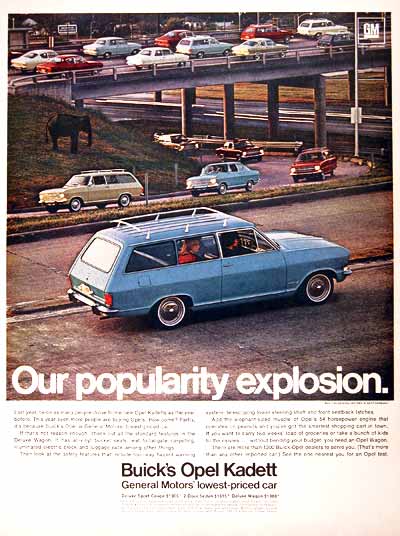
DETROIT – Don’t sell the meat department of the family grocery store to keep the business afloat.
There is a horrible thought floating about General Motors. GM would depart from manufacturing in Europe, sell off Opel to a neighbor like Peugeot, and perhaps grab Jeep and shut down the rest of the non-glamorous, uninteresting remnants of Chrysler. If they did this, they will somehow become rich, powerful, smart and influential again, and their execs can jet about the world attending smart conferences, being profitable and just like Toyota.
That idea serves only a few execs and their short-term vision. It does not serve the U.S. car market, which will now only have two big auto companies. It may serve stockholders temporarily. It does not serve dealers, who do fine selling Dodges and Chryslers.
The reality is that fully one in 10 GM cars is sold in Europe under the brands Opel and Vauxhall.
So there are two visions of GM at stake here; one a greatly contracting company that has shed a whopping EIGHT brands in just over two decades (Oldsmobile, Geo, Saab, Hummer, Pontiac, Bedford, Lotus and Saturn). And the second vision, of GM being among the largest, most profitable automotive companies in the world.
Think of it. GM ditched EIGHT vehicle brands. Thats a lot of sales volume lost. Might as well drop the name GM, and call the company Chevrolet! Even sadder, the last time GM tried to unload Opel, they were in talks with Angela Merkel. Yes that Angela Merkel. Their inability to become profitable in Europe and the U.K. is evidence that they have not fully recovered from their government bailout. It’s like welfare. Sometimes the recipient gets welfare for a time, and can escape. But bad old habits remain.
GM is an Octopus, Not a Starfish
Opel and Vauxhall are brands that are intrinsically connected to the history of Europe, and have strong legacies, market share and goodwill. Opel is synonymous with Germany and Vauxhall, Britain. Yet the DNA of the two brands is General Motors, as they have been GM for most of their lives.
Let’s liken General Motors to an octopus. If an octopus loses one of its arms, it grows back, exactly as it was. But an Octopus can’t grow back a head or a part of their central core if that goes. It dies or just suffers. And they can’t lose too many arms, or risk not being able to move. They lost alot of arms in the last few decades; in 1991 they sold almost 5 million cars in the U.S.; in 2016 they sold 3,042,773. The octopus is diminished, and now there is more competition.
The problem is that when you lose sales volume when you are the major player, the octopus head still needs just as much food.
An octopus can’t graft other octopus legs to it, either. Ergo, the mega-mistake of GM purchasing Saab and Hummer. Those odd brands were alien octopus legs, and they did not grow onto GM. The European market is important, not just because of volume, but because Europe connects GM to the rest of the world. How can GM profess to be a large motor company if it cannot profitably sell cars to Europe’s influential buyers?
The other comparison might be a starfish, which turns into a new starfish when the leg comes off. With each leg removal, you get an old starfish and a new one. However, this does not work for Opel as a comparison, as car companies need big partners and buying scale to be profitable.
GM has owned Adam Opel since 1929. Yes, you heard that right. 1929. Opel was founded in 1862. Yes 1862. Vauxhall dates from 1903; GM purchased Vauxhall in 1925. This is not selling off the family silver. Britain is a critical nation for GM because it is so international; awareness in that market exposes the company to the Anglophone nations that are culturally linked to the U.K. That is the same for the rest of Europe; Europe is a connecting point between Africa, not an island.
Dissecting the problems of Opel in Europe could involve many doctoral theses. One obvious issue is that the company has become a rebadge company, where Opel and Vauxhall products are nearly the same thing, down to the round logos on the front (Opel was always round, and Vauxhall, more of a shield, was square). In addition, Opel has been positioned more as a sporty brand, while Vauxhall is more of a staid brand.
The reality is that both brands need to be less one-dimensionsonal. Opel began as a company that made sewing machines; it even sold insurance. What other things can Opel do or make that fulfill the original idea of Opel? Why not turn Opel into the Honda-like division of General Motors, where innovation with engines and electronics are the main goal, and other lines of business help improve people’s lives through finance, savings and the like?
However, GM has a habit of doing weird stuff with its brands. I grew up with an Opel Kadett. My dad drove it; it was a green wagon, purchased at Brud Buick in Norfolk. If GM had kept with that, they would be in a different place. Eventually, Opel left, only to return as a crappy Saturn. Below, an Opel ad from around 1970.
And a product lineup for Buick dealers a bit later in the 70s.
Below, our station wagon, the 1970 Kadett! Dang, I loved that thing. And it felt even better that it was made by an American company in Germany.
On to Stately Luton
Vauxhall needs to get back to the basics of being a British company, and drop the weird names. Go back to normal, understandable names like Cavalier and Wyvern. Make Bedford trucks. The Vauxhall griffin needs to roar with Cavaliers and Wyverns. Why not a Ten-Four saloon?
There were 9.6 million people in the U.S. that watched the finale of Downton Abbey. That’s the market that Vauxhall has in the U.S. Take it. Most of those people don’t drive GM cars, I bet. Vauxhall makes a number of models that would be star performers in the upper middle class of the U.S. While GM may not think it is possible to to launch Vauxhall in the U.S. The Astra and Insignia model lines, named something normal like Cavalier and Wyvern, would be a start; their estates (i.e. station wagons) and saloons (use the Brit term) would be sensations in affluent zip code school pickup lines, and connect the American market to Canada. What if they explored the ISIS killing war vehicle market, under the guise of the old Churchill tank program during World War II? Of course some of these are sold as Buicks, already.
Below, a view of what the Vauxhall was in the early 1970s.
The other thing Vauxhall needs to do is drop with the social responsibility drivel. A recent report had CEO Mary Barra say this useless bit of “report” on renewable energy. Report on buying electricity through expensive agreements. Really?
By obtaining this power through Power Purchase Agreements, we are enabling third-party investment to support the growth of the wind industry.
Are you serious? GM is a car company, doing interesting and quite amazing things with batteries. That you want to clutter up nature with ugly wind farms when your batteries, powered by nuclear, are doing more than their part on this issue? Makes no sense. Focus on profits. Plus, in reality, GM is a company that needs internal combustion and gasoline to work. And that will be the case for a long time, as cheap as gas is these days. Vauxhall would do better to spend a million to launch a bike company under the Vauxhall brand.
There is a thought about selling an asset of a company. To evaluate what brands to sell, or what assets (factory, ships, etc), you have to weigh not only the issue at hand (i.e. losses and cost) but what the sale will do the trajectory and future of the company. Are these assets that are key to the future or are they dragging you down to places you don’t want to go.
Volkswagen dealers go mad when they company flirts with the idea of leaving the U.S. market, and still thinking they can sell Porsches and Audis. Alan Brown, Chairman of Volkswagen’s dealer Council, told Bloomberg Business Week recently something that also applies to GM, namely, ““We’ve got to be a real brand — and that means you have to go after sales volume, said Brown. “Anything else will be unacceptable.”
And as taxpayers, we know that GM’s and possibly Chrysler’s shrinking brand footprint is not good for the American auto industry. The reality? Why did we bail them out if they want to sell of brands or merge with Chrysler. Echoes of British Leyland, actually.
Nine GM Questions
I am not so naive to think that some of the following questions have not already been asked. Nevertheless, you need to ask questions to change bad habits.
- What does the sale say about General Motors as a manager of automotive brands, if they cannot sell cars in Europe with great legacies like Vauxhall and Opel?
- What happens when your executives are no longer on a first-hand basis with government and civic and business leaders in the U.K. and Europe? General Motors is a true global company when it has a presence around the globe. Ford will have offices around the world, and can talk to many leaders, but GM will no longer have a seat at the table.
- What ideas from Europe make it into GM cars? What will happen when those connections are lost?
- What sorts of expensive sponsorships (i.e. Vauxhall football to the tune of $500 million) can be cut in order get costs into line? When a company is money losing and paying for team sports, it seems a bit of a waste, eh? Obviously the promotion is not working. Not sure that’s a core part of the business, and I can assure you that there are no U.K. football fans that are choosing Vauxhall based on their sponsorship. How about Vauxhall sponsoring, to a much lesser amount in the six figures, the National Trust?
- Are there other options? If there are yearly losses, you can’t spin off the company, but are there new joint ventures that can transform the business?
- How will the European auto market change if GM leaves and there is one less company?
- What is the future with Brexit? GM sort of blamed issues at Vauxhall to costs related to the value of the pound. But in reality, issues related to currency are always a factor, no matter what happens with politics. In addition, with the U.K. separating from Europe politically, this gives even more reason for GM to have a flank both in Europe and the U.K. More open borders between the U.S. and U.K. would mean incredible possibilities for GM in the U.K., and other Commonwealth countries. The connections between the U.K. and Australia and Africa are strong, and a true future for GM.
- Is China trustworthy? Of course, the Chinese liked Buick, and helped save it. But the reality is that the communists in China would throw GM out in a minute, if they wanted to. Goodbye years of effort. But the U.K. and Germany have been closely allied with Vauxhall and Opel since the company’s inception. These are safe places to have operations overseas.
- Can you ever get the asset back? The answer in this case is no. If 20 years down the line, GM wanted a presence in Europe, it would have to recreate it or buy another company and figure out how to merge two separate car lines. The reality? Don’t ditch an asset if you might need it back.
If it’s key asset, you need to fix it, even if your strategy hasn’t worked so far.

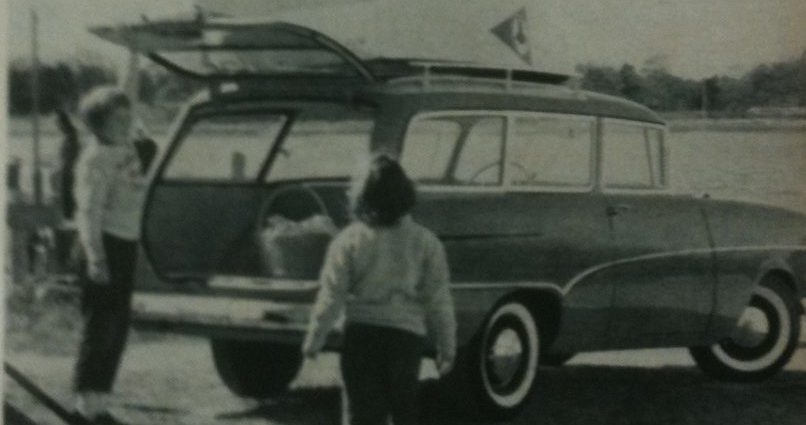

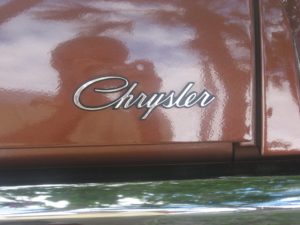

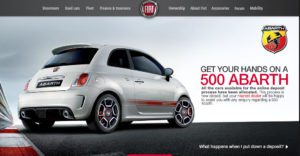
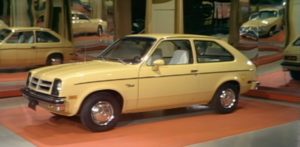

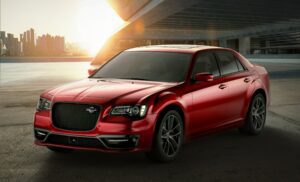
There was a NINTH brand. SAAB was sold
and new owners could not continue the brand.